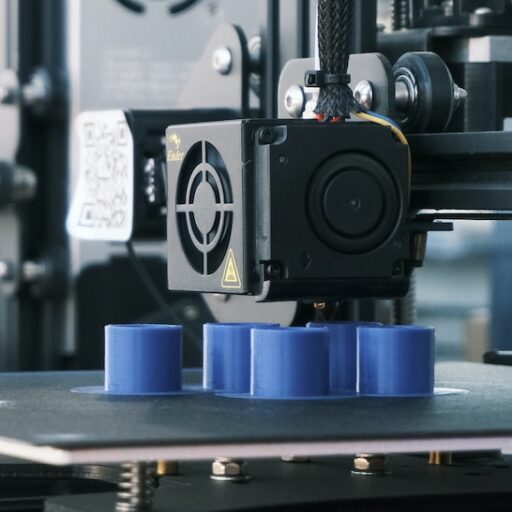Support our educational content for free when you purchase through links on our site. Learn more
[2023] Is 3D Printing a Profitable Business? A Comprehensive Guide
Are you considering starting a 3D printing business? Wondering if it's a profitable venture? Our team at 3D Printed™ has put together this comprehensive guide to help you understand the potential profitability of a 3D printing business. From the demand for 3D printing to the profit margins and everything in between, we've got you covered. So let's dive in and explore the world of 3D printing as a business.
Table of Contents
- Quick Answer
- Quick Tips and Facts
- Is 3D Printing Really Profitable?
- Is There a Demand for 3D Printing?
- What Is the Profit Margin on a 3D Printing Business?
- Is It Worth It to Sell 3D Prints?
- How to Start a 3D Printing Business
- FAQ
- Conclusion
- Recommended Links
- Reference Links
Quick Answer
Yes, 3D printing can be a profitable business. With the increasing demand for customized products and the versatility of 3D printing technology, there are numerous opportunities to capitalize on this emerging industry. However, like any business, success in the 3D printing industry requires careful planning, market research, and a solid business strategy. The key to profitability lies in finding a niche market, offering unique products or services, and delivering exceptional quality.
Quick Tips and Facts
- The global 3D printing market is projected to reach $51.77 billion by 2026, with a CAGR of 25.8% from 2019 to 2026. (Source: Grand View Research)
- 3D printing technology allows for rapid prototyping, customization, and low-volume production, making it attractive to various industries such as healthcare, automotive, aerospace, and consumer goods.
- Starting a 3D printing business requires an initial investment in a 3D printer, software, materials, and marketing.
- The success of a 3D printing business depends on factors such as market demand, competition, pricing strategy, and customer satisfaction.
Is 3D Printing Really Profitable?
Yes, 3D printing can be a profitable business. However, profitability depends on several factors, including market demand, competition, pricing strategy, and operational efficiency. Here are some key points to consider:
Market Demand
- Identify a niche market with a demand for 3D printed products or services. This could be anything from customized jewelry to architectural models.
- Research the target market to understand its size, growth potential, and customer preferences.
- Stay updated with the latest trends and technologies in the 3D printing industry to capitalize on emerging opportunities.
Competition
- Analyze the competitive landscape to identify potential competitors and their strengths and weaknesses.
- Differentiate your business by offering unique products, superior quality, exceptional customer service, or faster turnaround times.
- Build a strong brand identity to stand out from the competition and attract customers.
Pricing Strategy
- Determine a pricing strategy that covers your costs, including equipment, materials, labor, and overhead expenses, while remaining competitive in the market.
- Consider offering tiered pricing based on factors such as complexity, size, and customization level of the 3D printed products.
- Regularly review and adjust your pricing strategy based on market conditions and customer feedback.
Operational Efficiency
- Optimize your workflow and production processes to minimize costs and maximize efficiency.
- Invest in quality 3D printers, software, and materials to ensure consistent and reliable results.
- Streamline post-processing and finishing techniques to deliver high-quality finished products.
In summary, 3D printing can be profitable if you identify a niche market, differentiate your business, implement an effective pricing strategy, and optimize your operations.
Is There a Demand for 3D Printing?
Yes, there is a growing demand for 3D printing across various industries. Here are some sectors that are driving the demand for 3D printing:
- Healthcare: 3D printing is revolutionizing the healthcare industry by enabling the production of customized medical implants, prosthetics, and surgical models.
- Automotive: The automotive industry utilizes 3D printing for prototyping, tooling, and manufacturing complex parts with reduced weight and improved performance.
- Aerospace: 3D printing allows aerospace companies to create lightweight, complex components, reducing fuel consumption and improving efficiency.
- Consumer Goods: Customized and personalized products are in high demand, and 3D printing enables the creation of unique designs and one-of-a-kind items.
- Education: 3D printing is becoming increasingly popular in educational institutions, allowing students to learn and explore concepts in a hands-on manner.
The demand for 3D printing is expected to continue growing as the technology advances and more industries recognize its benefits.
What Is the Profit Margin on a 3D Printing Business?
The profit margin on a 3D printing business can vary depending on several factors, including the type of products or services offered, pricing strategy, operational costs, and market demand. Here are some considerations:
Type of Products or Services
- Customized or personalized products typically have higher profit margins compared to standardized items.
- Offering value-added services such as design assistance, post-processing, and finishing can increase profitability.
Pricing Strategy
- Determine a pricing strategy that covers your costs while remaining competitive in the market.
- Consider offering different pricing tiers based on complexity, size, and customization level.
- Regularly review and adjust your pricing strategy based on market conditions and customer feedback.
Operational Costs
- Calculate your operational costs, including equipment, materials, labor, and overhead expenses.
- Optimize your workflow and production processes to minimize costs and maximize efficiency.
- Consider the costs of post-processing, finishing, and packaging when determining your profit margins.
Market Demand
- Analyze the demand for your products or services in your target market.
- Adjust your profit margins based on market conditions and competition.
- Monitor customer satisfaction and feedback to ensure your pricing is aligned with perceived value.
The profit margin on a 3D printing business can range from 10% to 50% or more, depending on the factors mentioned above. It's important to regularly review and analyze your financials to ensure profitability.
Is It Worth It to Sell 3D Prints?
Selling 3D prints can be a profitable business if you approach it strategically. Here are some factors to consider:
Target Market
- Identify a niche market or specific customer segment that has a demand for 3D printed products.
- Research the market to understand customer preferences, trends, and pricing expectations.
Unique Products
- Differentiate your products from the competition by offering unique designs, customization options, or superior quality.
- Explore partnerships with designers or artists to create exclusive designs that appeal to your target market.
Pricing Strategy
- Determine a pricing strategy that covers your costs while remaining competitive in the market.
- Consider factors such as material costs, production time, complexity, and customization level when setting prices.
Marketing and Branding
- Build a strong brand identity to stand out from the competition.
- Utilize online platforms, social media, and targeted advertising to reach your target market.
- Showcase your products through high-quality images and engaging product descriptions.
Customer Satisfaction
- Provide exceptional customer service to build a loyal customer base.
- Ensure timely delivery, consistent quality, and effective communication with customers.
- Encourage customer feedback and use it to improve your products and services.
Selling 3D prints can be worth it if you can offer unique products, effectively market your business, and provide excellent customer service. It requires careful planning, creativity, and continuous improvement to succeed in this competitive market.
How to Start a 3D Printing Business
Starting a 3D printing business requires careful planning and execution. Here are the steps to get you started:
-
Research and Market Analysis: Conduct thorough market research to identify potential niches, target markets, and competition. Understand the demand for 3D printed products or services in your chosen market.
-
Business Plan: Develop a comprehensive business plan that outlines your goals, target market, marketing strategy, pricing, financial projections, and operational details.
-
Equipment and Software: Invest in quality 3D printers, software, and other necessary equipment. Consider factors such as print volume, resolution, material compatibility, and ease of use.
-
Materials and Suppliers: Identify reliable suppliers for 3D printing materials, ensuring a steady supply of high-quality materials at competitive prices.
-
Workflow and Production Process: Establish an efficient workflow and production process to optimize productivity and minimize costs. Consider post-processing and finishing techniques to deliver high-quality finished products.
-
Pricing and Cost Analysis: Determine your pricing strategy based on your costs, market demand, and competition. Regularly review and adjust your pricing to stay competitive and profitable.
-
Marketing and Branding: Develop a strong brand identity and create a marketing plan to reach your target market. Utilize online platforms, social media, and targeted advertising to promote your business.
-
Customer Service and Satisfaction: Focus on providing exceptional customer service to build a loyal customer base. Ensure timely delivery, consistent quality, and effective communication with customers.
-
Continuous Learning and Improvement: Stay updated with the latest trends and technologies in the 3D printing industry. Continuously improve your products, processes, and customer experience based on feedback and market insights.
Starting a 3D printing business requires dedication, perseverance, and a passion for the technology. With careful planning and execution, it can be a rewarding and profitable venture.
FAQ

Q: Is 3D printing really profitable?
A: Yes, 3D printing can be a profitable business. However, success depends on factors such as market demand, competition, pricing strategy, and operational efficiency. It's important to conduct thorough market research and develop a solid business plan.
Q: Is there a demand for 3D printing?
A: Yes, there is a growing demand for 3D printing across various industries such as healthcare, automotive, aerospace, and consumer goods. The ability to create customized products and prototypes has made 3D printing increasingly popular.
Q: What is the profit margin on a 3D printing business?
A: The profit margin on a 3D printing business can vary depending on factors such as the type of products or services offered, pricing strategy, operational costs, and market demand. Profit margins can range from 10% to 50% or more.
Q: Is it worth it to sell 3D prints?
A: Selling 3D prints can be a profitable business if you can offer unique products, effectively market your business, and provide excellent customer service. It requires careful planning, creativity, and continuous improvement to succeed in this competitive market.
Q: How much does it cost to start a 3D printing business?
A: The cost to start a 3D printing business can vary depending on factors such as the type of equipment, software, materials, and marketing expenses. A basic setup can cost anywhere from a few thousand dollars to tens of thousands of dollars.
Conclusion
Starting a 3D printing business can be a profitable venture if approached strategically. By identifying a niche market, offering unique products or services, and delivering exceptional quality, you can position your business for success. However, it's important to conduct thorough market research, develop a solid business plan, and continuously adapt to changing market conditions. With careful planning and execution, a 3D printing business can be a rewarding and profitable endeavor.
Recommended Links
- Shop 3D Printers on Amazon | Walmart | eBay
- Shop 3D Printing Materials on Amazon | Walmart | eBay
- Shop 3D Printing Accessories on Amazon | Walmart | eBay




